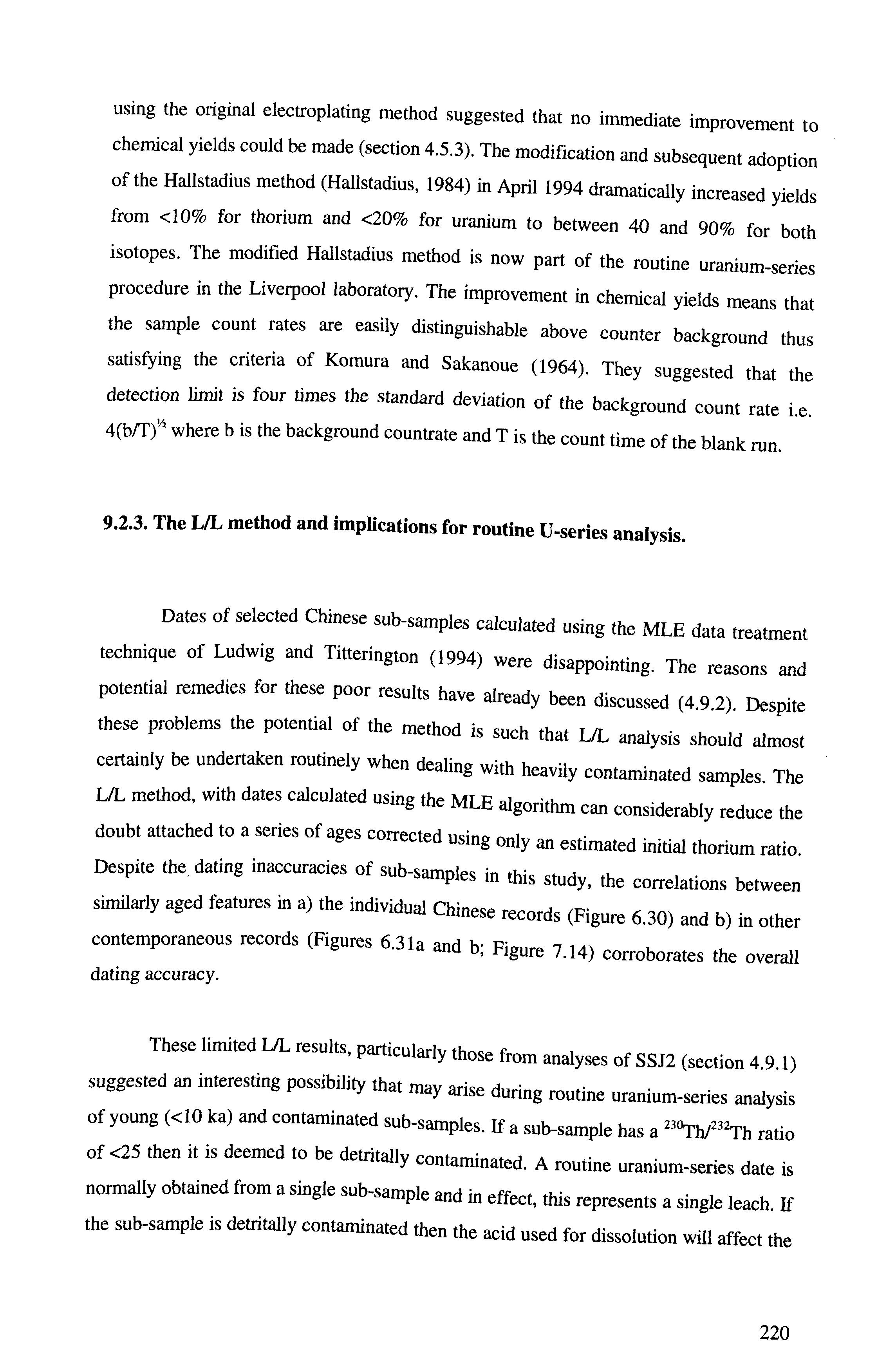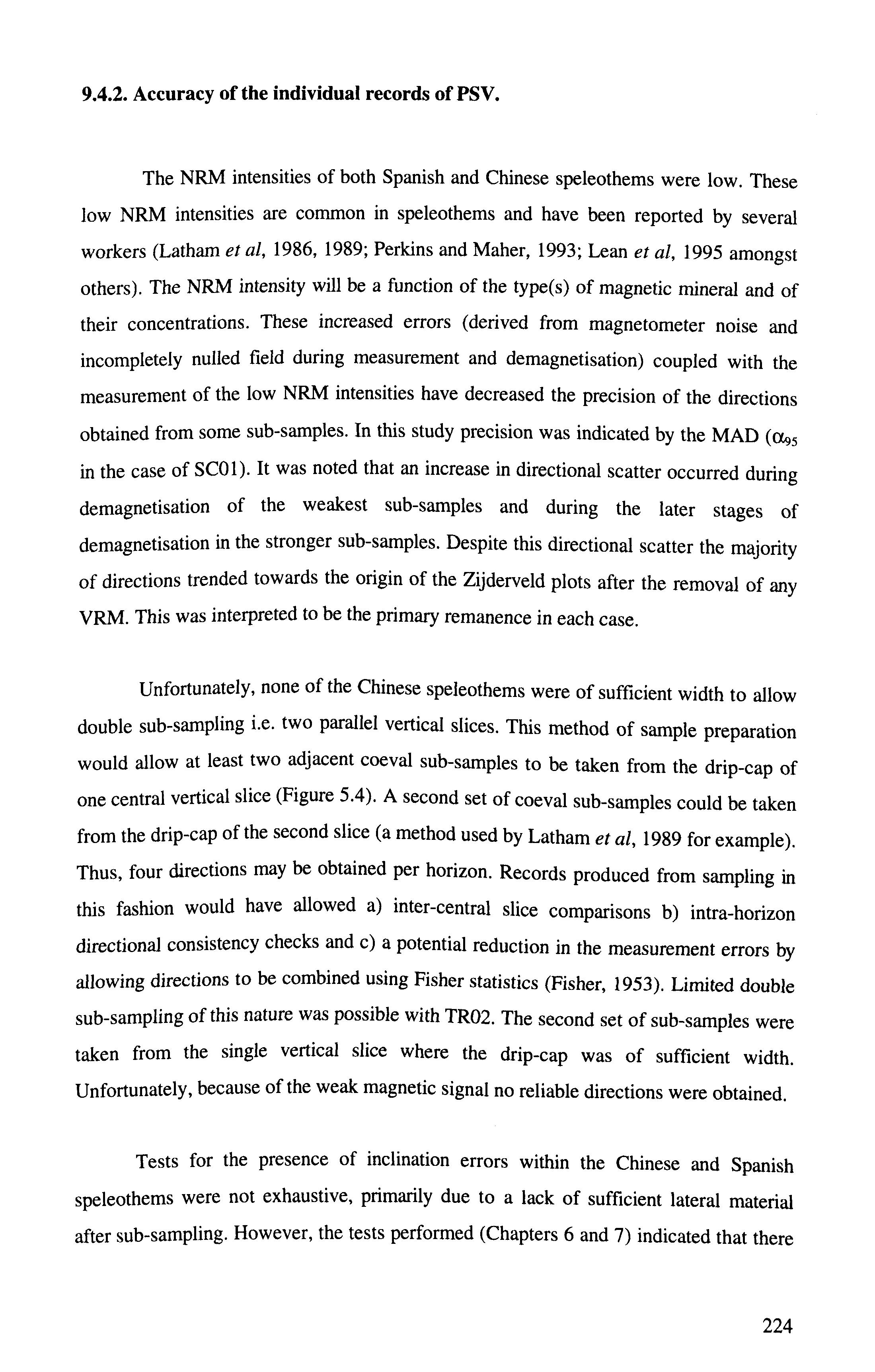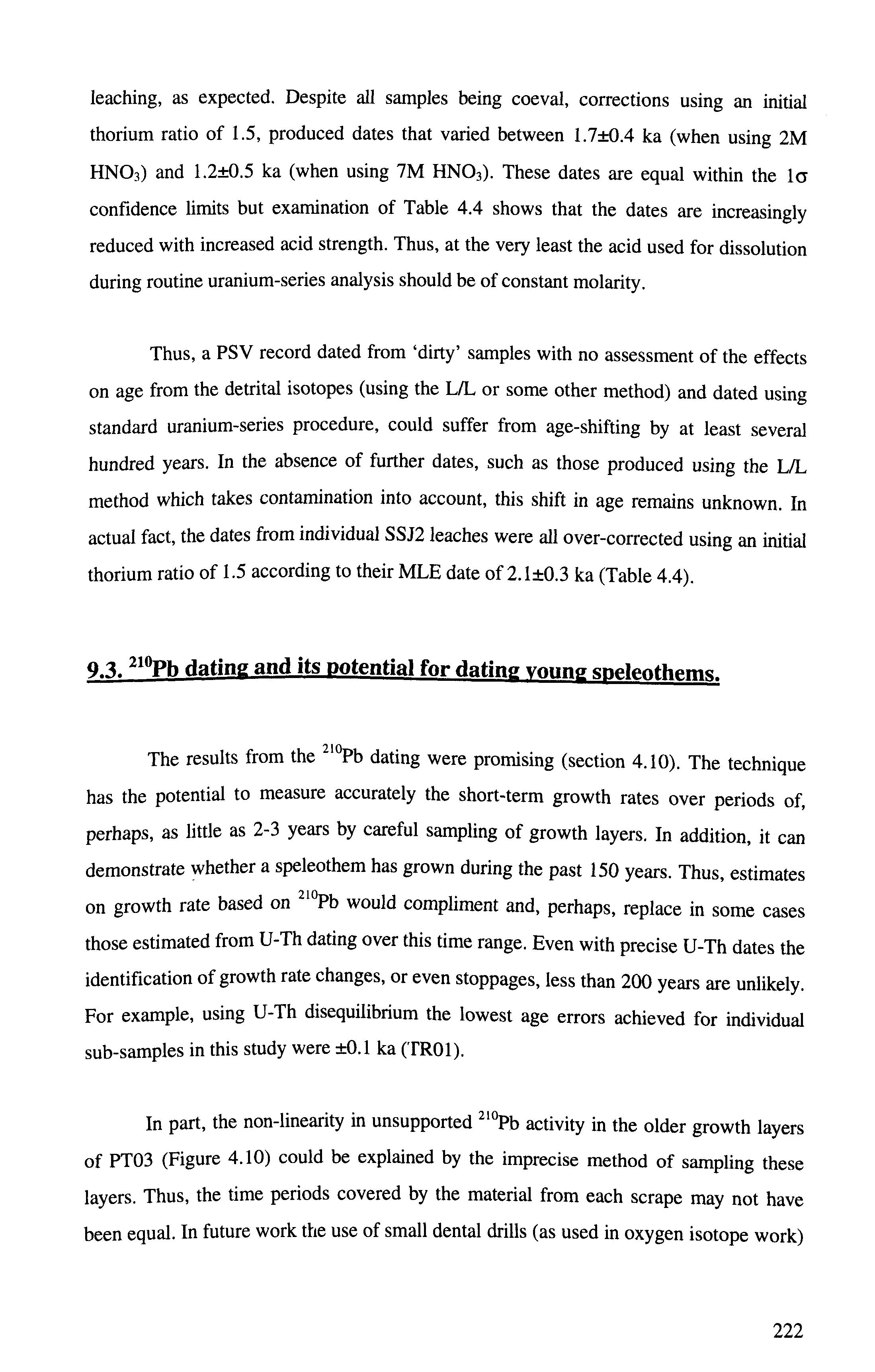using the original electroplating method suggested that no immediate improvement to chemical yields could be made (section 4.5.3). The modification and subsequent adoption of the Hallstadius method (Hallstadius, 1984) in April 1994 dramatically increased yields from <10% for thorium and <20% for uranium to between 40 and 90% for both isotopes. The modified Hallstadius method is now part of the routine uranium-series procedure in the Liverpool laboratory. The improvement in chemical yields means that the sample count rates are easily distinguishable above counter background thus satisfying the criteria of Komura and Sakanoue (1964). They suggested that the detection limit is four times the standard deviation of the background count rate i.e. 4(b/T)'/j where b is the background countrate and T is the count time of the blank run.
9.2.3. The L/L method and implications for routine U-series analysis.
Dates of selected Chinese sub-samples calculated using the MLE data treatment technique of Ludwig and Tittering,on (1994) were disappointing. The reasons and potential remedies for these poor results have already been discussed (4.9.2). Despite these problems the potential o f the method is e.w ,
t
/r
moa ls such that L/L analysis should almost certainly be undertaken routinely when dealino v, •, y QealinS Wlth heavily contaminated samples. The L/L method, with dates calculated usine the MT p Qi _ g ne MLE aigonthm can considerably reduce the doubt attached to a series o f ages corrected
s
„ ,
corrected using only an estimated initial thorium ratio
Despite the dating inaccuracies of sub-samples in this study, the correlations between similarly aged features in a) the individual Chinese records (Fignte 6.30) and b) in other contemporaneous records (Figures 6 31a and u- c-
*
„ ,,, a and b, Figure 7.14) corroborates the overall
dating accuracy.
These limited L/L results, particularly those from analyses of SSJ2 (section 4.9.1) suggested an interesting possibility that may arise during routine uranium-series analysis of young « 1 0 ka) and contaminated sub-samples. If a sub-sample has a “ W ^ h ratio of <25 then it is deemed to be detritally contaminated. A routine uranium-series date is normally obtained from a single sub-sample and in effect, this represents a single leach. If the sub-sample is detritally contaminated then the acid used for dissolution will affect the
220








